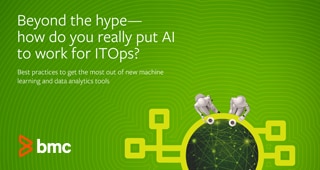What is a Software-Defined Data Center (SDDC)? Simply put: it is a secure facility where servers, networking devices, storage arrays, CPU, and security applications are virtualized and delivered as a service.
Operators are seeking fully automated data centers of this type to achieve higher levels of scalability, flexibility, agility and resilience. The advantage to the service provider is that they can build massive facilities and deliver computing, storage and networking to many customers. They can centralize the infrastructure and save costs through economies of scale.
But before the SDDC can be deployed, the underlying infrastructure must be managed and optimized. Even these highly virtualized environments, like the cloud, depend on very real, brick and mortar, physical environments to operate.
While virtual environments may seem infinite with never ending resources, in the physical layer supporting the virtual environment, space, cooling and power are very finite (and expensive). Planning, managing and optimizing for these virtual infrastructures is still vital – and a very real challenge for most organizations faced with managing increased content and data.
That’s where Data Center Infrastructure Management (DCIM) software solutions come into play. DCIM enables data center operators to gain a single-pane-of-glass, real-time view into their entire infrastructure. Eliminating the IT and facilities silos, these solutions offer real-time insight into IT and facilities equipment, capacity of power, space and cooling, asset and workflow management and make a host of other metrics visible and actionable.
With a DCIM solution deployed, mission critical facility operators can gain a clear view of real-time data concerning the location of their assets and the resources they’re drawing. More importantly they can now be fully aware of where their assets are in their lifecycle, what changes have occurred and other relevant and critical data. DCIM provides valuable historical data vital for predictive analysis of future data center needs.
Armed with this vital information, operators can make changes to the physical environment to boost efficiency and uptime and prolong the useful life of a data center. They can improve asset management and workflow, and optimize systems to save on energy costs, staff time and ultimately, physical infrastructure.
Correlating all this data with the virtual layer produces transparency and a complete picture essential to operating the data center as efficiently and economically as possible.
Ultimately the “virtual” world can only be as efficient as the physical infrastructure it is operated in. And ensuring that the physical world is scalable, available, consistent and dependable will allow for a successful software-defined data center.
Get practical guidance for AIOps
These postings are my own and do not necessarily represent BMC's position, strategies, or opinion.
See an error or have a suggestion? Please let us know by emailing blogs@bmc.com.






